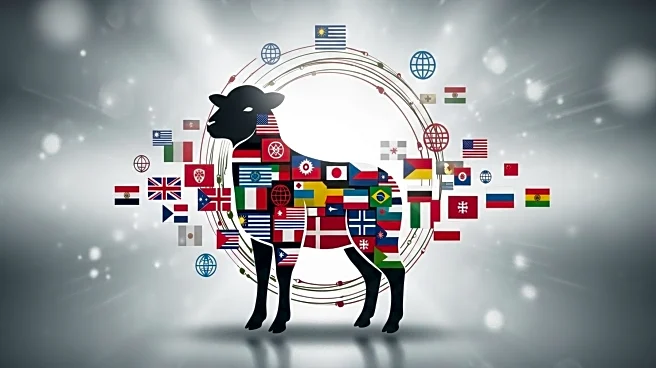What's Happening?
The cosmetic packaging market in North America is experiencing significant growth, with projections to reach $8.29 billion by 2030, according to research by Manish Kapoor, Founder and CEO of Growth Catalyst Group. However, this growth is accompanied by challenges, particularly tariffs that are affecting pricing for beauty brands and their packaging partners. Tariffs on imported components can increase costs by up to 25%, posing sustainability issues for U.S.-based suppliers. Kapoor suggests diversification as a strategy to manage these pressures, emphasizing the importance of hybrid supply models to maintain steady supply chains and cost efficiency.
Why It's Important?
The imposition of tariffs on imported components in the cosmetic packaging industry has significant implications for U.S. businesses. Increased costs can affect the competitiveness of domestic suppliers, potentially leading to higher prices for consumers. The need for diversification in supply chains highlights the broader economic impact of trade policies on industries reliant on global sourcing. Companies that adapt by diversifying their supply chains may mitigate risks and maintain profitability, while those unable to adjust may face financial strain. This situation underscores the importance of strategic planning in response to changing trade environments.
What's Next?
As the cosmetic packaging industry navigates these challenges, companies may explore alternative sourcing options and invest in domestic production capabilities to reduce dependency on imports. Industry stakeholders might advocate for policy changes to alleviate tariff pressures, while businesses could collaborate to share best practices in supply chain management. The ongoing dialogue about tariffs and their impact may influence future trade negotiations and economic policies, potentially leading to adjustments that benefit the industry.
Beyond the Headlines
The tariff situation in the cosmetic packaging industry raises ethical considerations regarding fair trade practices and the balance between protecting domestic industries and fostering international commerce. Long-term shifts in supply chain strategies could lead to increased innovation in packaging solutions, as companies seek cost-effective alternatives. Additionally, the focus on diversification may drive collaborations between U.S. and international suppliers, fostering a more resilient and interconnected global market.











